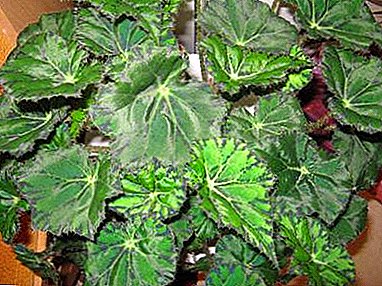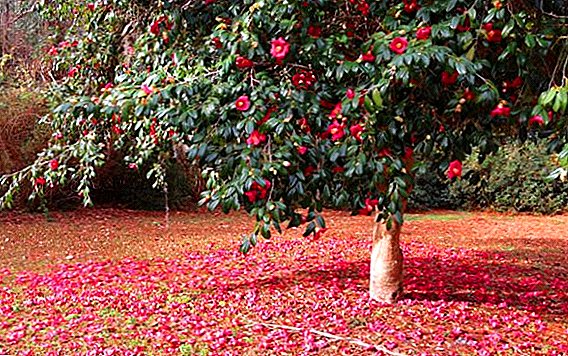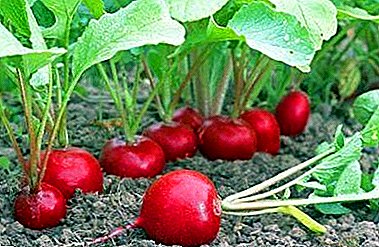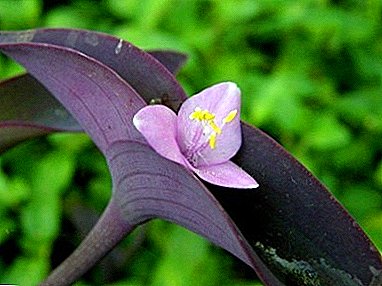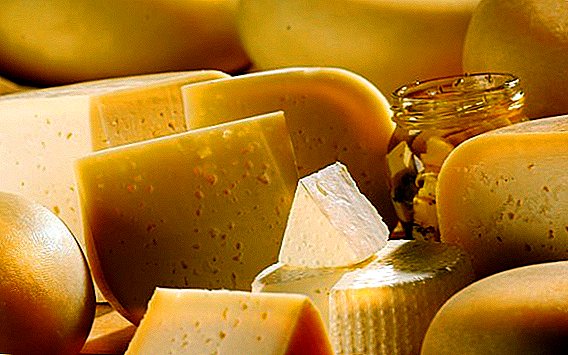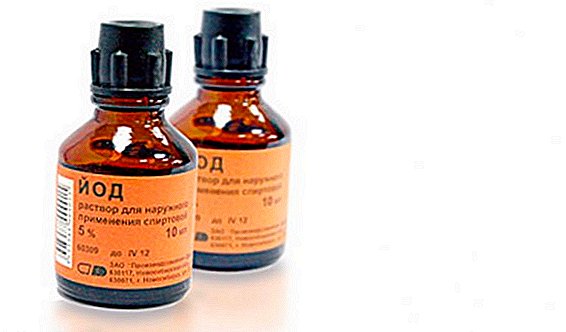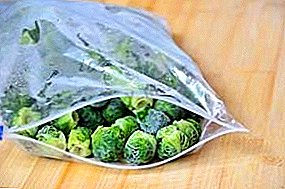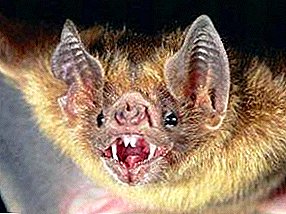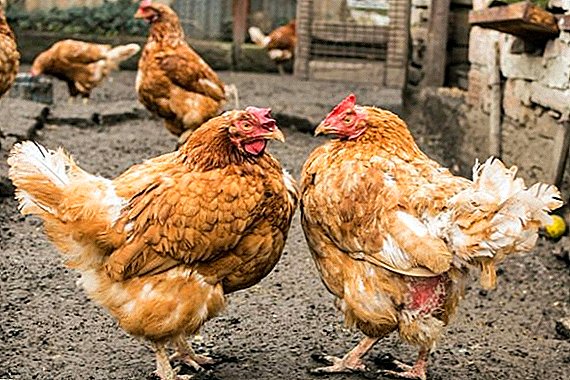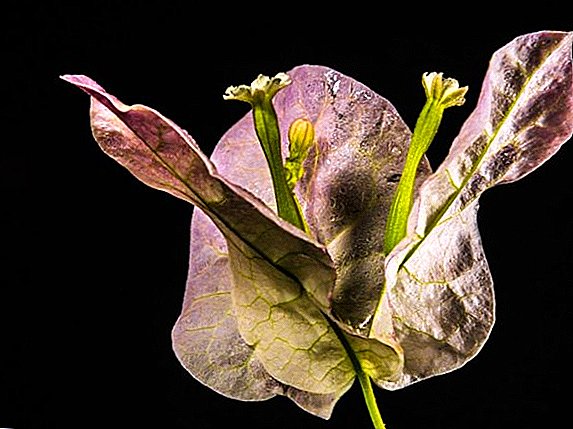 Bougainvillea (Bougainvillea) - famous plant of the family Niktaginovye, came to us from South America. Widespread due to the long flowering period and excellent decorative properties.
Bougainvillea (Bougainvillea) - famous plant of the family Niktaginovye, came to us from South America. Widespread due to the long flowering period and excellent decorative properties.
Bougainvillea - not too fastidious plant, therefore, growing and caring for it under the force of novice growers.
Did you know? The flower is named for the French traveler Louis Antoine de Bougainville, who brought the plant to Europe.
Bougainvillea: plant description
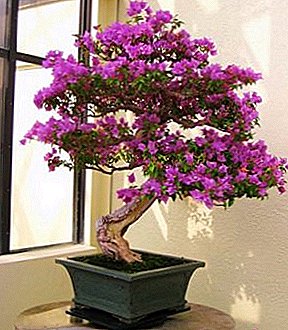 A characteristic feature of bougainvillea is that this plant, depending on the pruning, can be formed both as a shrub and as a vine or a standard tree.
A characteristic feature of bougainvillea is that this plant, depending on the pruning, can be formed both as a shrub and as a vine or a standard tree.
It has rare, but sharp thorns and oval-shaped leaves with pointed ends. Flowers of small size, milky color, surrounded by bracts of different colors, which depends on the variety (purple, red, pink, peach, etc.).
Choosing a place for bougainvillea homes
The best place for a bougainvillea indoor flower will be windows on the south and west side of the house or apartment.
In the warm season, the pot should be taken out from time to time to fresh air in order for the plant to receive an additional amount of light and fresh air.
However, direct sunlight on the leaves can cause burns, so on hot summer days it is advisable to shade the flower.
The composition of the soil for the plant
In specialized stores, you can buy a universal mixture for flowering plants or prepare it yourself. The composition of the soil for bougainvillea must be included in equal proportions:
- humus;
- peat;
- sand;
- sod land.
Temperature
 The most suitable temperature for a bougainvillea flower will be 22-30 ° C, and in the rest period it will be 4-7 ° C.
The most suitable temperature for a bougainvillea flower will be 22-30 ° C, and in the rest period it will be 4-7 ° C.
During a seasonal decrease in temperature, the plant will shed its leaves. New greens will appear in early spring.
Important! At temperatures below 4 ° C, bougainvillea dies.
Planting and transplanting bougainvillea
The best time to plant a flower is mid-spring. Homemade bougainvillea is planted in pots of 1.5-5 l.
Young plants are transplanted every two years, old - as needed, every 3-5 years. At the bottom of the tank necessarily spread a layer of drainage, consisting of expanded clay, small pebbles, shards, and a little fresh soil mixture.
The plant requiring transplantation is plentifully watered, carefully taken out by an earthen clod, and holding the flower by the top, is transferred to a new pot. Then the soil is added to the container and slightly compacted.
The distance between the roots and the walls of the pot should be at least 2-3 cm.
Important! To make the plant rooted more quickly after transplantation, it should be left for several days without watering, in the shade.
How to care for bougainvillea
Bougainvillea flower care at home includes watering, pruning and fertilizing.
Watering bougainvillea
 In summer, bougainvillea needs to be watered 1-2 times a week. It is important to ensure that there is no stagnant moisture in the pot. Water from the pallet of the pot must be drained, otherwise the roots will begin to rot.
In summer, bougainvillea needs to be watered 1-2 times a week. It is important to ensure that there is no stagnant moisture in the pot. Water from the pallet of the pot must be drained, otherwise the roots will begin to rot.
In winter, it is enough to moisten the soil once every two weeks to avoid drying out. The lower the temperature in the room, the less moisture is required by the plant. If the bougainvillea has dropped the leaves, then watering is stopped altogether.
Forming and pruning bougainvillea
To cut the bougainvillea at home is not difficult.
In late autumn - early winter shoots are shortened by half. In the spring, the formation of bougainvillea continue.
In order to properly cut the bougainvillea, before proceeding to work, it is carefully examined. It is necessary to remove damaged, twisted, unsuccessfully located shoots.
In the summer, immediately after flowering, it is worth cutting the young side branches, which will accelerate the formation of new lush flowers.
Properly pruning bougainvillea can be, leaving the branches older than 3-4 years, since they have almost no buds and do not grow side shoots.
With proper pruning, bougainvillea can be shaped as an arch, heart, and other figures.
Top dressing
 From spring to autumn, bougainvillea is fed every 10-14 days. At the same time, it is recommended to alternate organic fertilizers with complex mineral additives. However, it should be noted that with an excess of nitrogen, lateral shoots grow more actively, and the formation of flowers slows down.
From spring to autumn, bougainvillea is fed every 10-14 days. At the same time, it is recommended to alternate organic fertilizers with complex mineral additives. However, it should be noted that with an excess of nitrogen, lateral shoots grow more actively, and the formation of flowers slows down.
Therefore, during the flowering period, it is necessary to use fertilizers with a predominance of potassium and phosphorus. During the rest period, the plant does not need feeding.
Bougainvillea Stem Support
Bougainvillea stems need support to keep its weight. Large flowers will need bamboo or wire support, and young plants will have enough wire brace. It is bent in half, folded at the right angle and stuck into the soil at the base of the flower.
Reproduction of bougainvillea at home
In order to propagate the bougainvillea, as a rule, use the seed method, grafting and air cuttings.
Seed method
 Reproduction of bougainvillea from seeds at home requires a lot of time. First of all, you should prepare the soil, mixing peat and sand in equal proportions.
Reproduction of bougainvillea from seeds at home requires a lot of time. First of all, you should prepare the soil, mixing peat and sand in equal proportions.
Seeds before planting is recommended to soak for several hours in a growth stimulator. They are placed at a depth of about 0.5 cm. For germination, it is necessary to maintain the temperature in the room at 25-30 ° C and to provide lower heating of the seed tank.
Shoots require periodic spraying with water and airing. If reproduction takes place in winter, it is necessary to illuminate the seeds with fluorescent lamps. If these conditions are met, shoots will appear in 2-3 months.
Air layouts
Alternatively, you can propagate bougainvillea by air layering. To do this, on one of the long shoots make several cuts rings. The branch is tilted, the places of the cuts are fixed on the surface of the earth with a bracket, and then lightly sprinkled with soil.
After some time, young shoots will begin to develop from the buds. After the branches become stronger, it can be separated from the mother plant and transplanted to a new place.
Stem cuttings
 Most often at home bougainvillea propagated by cutting. In the spring, you can use the branches remaining after pruning, in the summer shoots for this purpose are specially cut.
Most often at home bougainvillea propagated by cutting. In the spring, you can use the branches remaining after pruning, in the summer shoots for this purpose are specially cut.
On a handle 10 cm long, an incision is made under the bud, the lower leaves are removed and dipped in a growth stimulator. After that, the branch is placed in the prepared soil at an angle of 45% at 2-3 internodes.
The optimum medium for rooting the cutting will be a mixture of sand, coal and sphagnum moss. The temperature should be around 20-25 ° C. Also require moderate watering and diffused light. You should regularly spray the cuttings with water and air.
Did you know? The fastest plant rooted in special greenhouses with underheating.
Diseases and pests
Most often, the plant is bothered by such pests as spider mites, aphids, and mealybugs. To prevent infection, you should periodically wipe the dust from the leaves, as well as remove dried leaves and inflorescences.
When insects are detected, the affected parts of the plant are removed, appropriate insecticidal preparations are used.
 Stagnant moisture at the roots can lead to the development of fungal diseases. Therefore, it is important to observe the irrigation regime and avoid overwetting the soil.
Stagnant moisture at the roots can lead to the development of fungal diseases. Therefore, it is important to observe the irrigation regime and avoid overwetting the soil.
Bougainvillea with proper care and reproduction will delight lush flowering.


